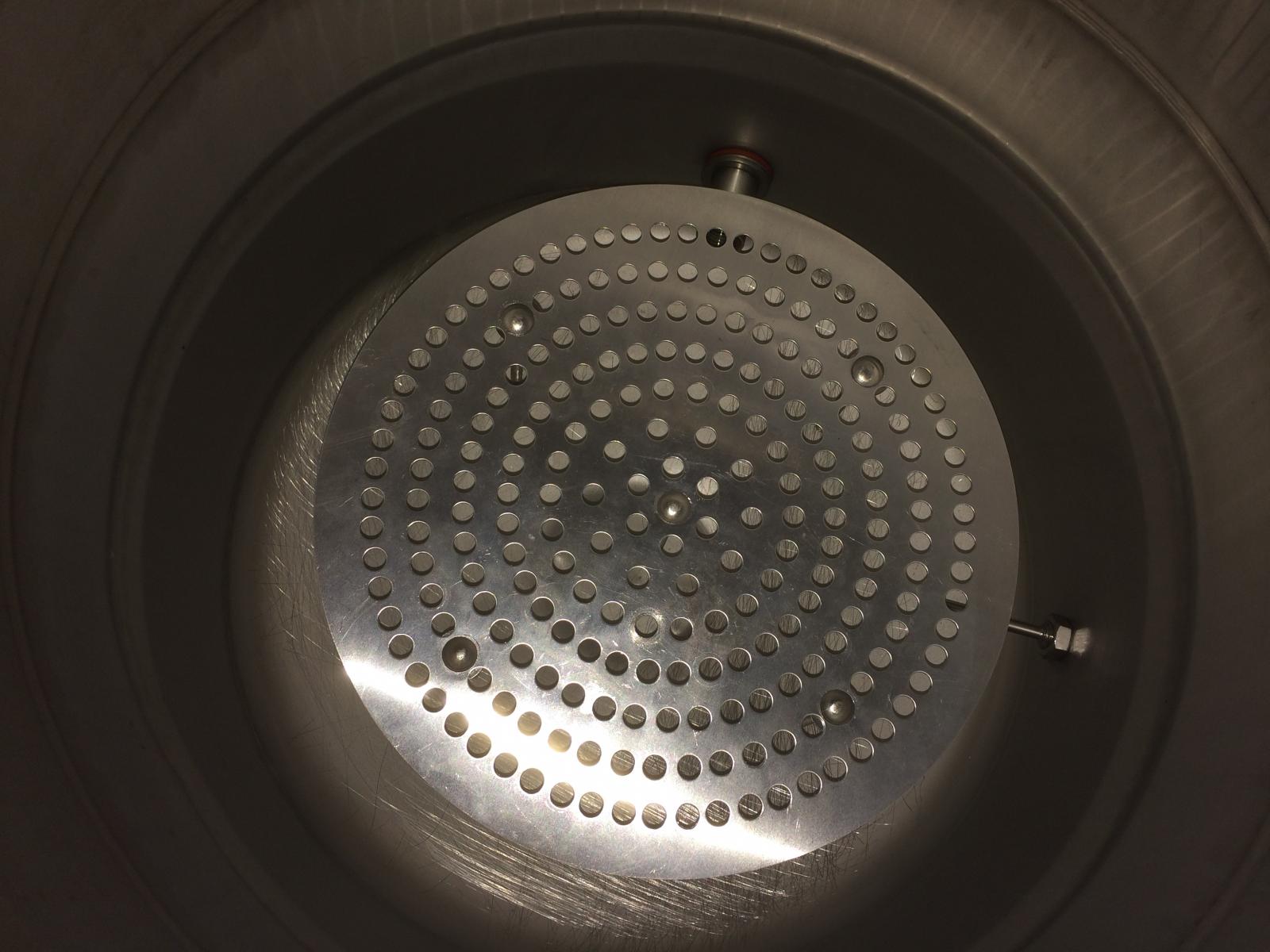brew703
Well-Known Member
Would this work to use as a screen to prevent my BIAB bag from scorching?
it's a round Weber grate made of chrome plated steel
![71igHe0NZHL._SL1280_[1].jpg 71igHe0NZHL._SL1280_[1].jpg](https://cdn.homebrewtalk.com/data/attach/254/254398-71igHe0NZHL.-SL1280-1-.jpg)
it's a round Weber grate made of chrome plated steel
![71igHe0NZHL._SL1280_[1].jpg 71igHe0NZHL._SL1280_[1].jpg](https://cdn.homebrewtalk.com/data/attach/254/254398-71igHe0NZHL.-SL1280-1-.jpg)

![71igHe0NZHL._SL1280_[1].jpg 71igHe0NZHL._SL1280_[1].jpg](https://cdn.homebrewtalk.com/data/attach/254/254398-71igHe0NZHL.-SL1280-1-.jpg)
Also, I would think that would still be a little too close to the bottom to offer much resistance to scortching without some sort of leg on it to keep it off the bottom a couple inches. Not sure though.

what about this one. It is stainless but chrome plated.

I have heated my strike water to what Beersmith/ brewers friend said but it still drops by a couple degrees during the 60 min mash. I also insulate with a thick beach towel on top and wrapped in a sleeping bag. Maybe I can get an insulated welding blanket to help. And the temps down here have been in the mid 90's. I also have a new kettle that I have not tried yet so I'm hoping the mash temps become more stable. Hoping to put my new kettle to use next weekend.I don't put the grain in the bag until I'm done with the mash. I set the bag in a collander in another pot and pour my mash into it.... My bag is just a filter. I usually dunk sparge the bag using the original pot..... While the bag is draining I give the pot that serves as my mash tun a quick rinse and put the proper amount of water in it, and heat it for the dunk sparge. It's a slightly more complicated process, but it works well for me.
Realistically you shouldn't have a scorching problem if you heat your strike water to the proper temp, and insulate the mash tun..... or whatever you call it with BIAB.
I once did a BIAB RIMS system, and built a simple false bottom to keep the suction line for my pump from being blocked by the bag. It was a rather unique "suck start" system using a $20 ebay 12 volt food grade pump...... It would have worked fine except that the bag tended to clog with fines as a result of the constant circulation.
H.W.
I have heated my strike water to what Beersmith/ brewers friend said but it still drops by a couple degrees during the 60 min mash. I also insulate with a thick beach towel on top and wrapped in a sleeping bag. Maybe I can get an insulated welding blanket to help. And the temps down here have been in the mid 90's. I also have a new kettle that I have not tried yet so I'm hoping the mash temps become more stable. Hoping to put my new kettle to use next weekend.
I have heated my strike water to what Beersmith/ brewers friend said but it still drops by a couple degrees during the 60 min mash. I also insulate with a thick beach towel on top and wrapped in a sleeping bag. Maybe I can get an insulated welding blanket to help. And the temps down here have been in the mid 90's. I also have a new kettle that I have not tried yet so I'm hoping the mash temps become more stable. Hoping to put my new kettle to use next weekend.
Would this work to use as a screen to prevent my BIAB bag from scorching?
I have your bag. If my mash temps drop more than two degrees, I plan on raising the bag a bit with the pulley. Didnt think about raising the bag until after I posted.There are several things you can do to keep your bag from scorching, adding a false bottom of sorts is one of them.
Other options:
1. Add nothing to the bottom of the kettle, do not fire the burner with the bag in the pot. If you do need to make a minor heat adjustment to the mash, simply apply low heat and stir constantly while heating.
2. Raise the bag off the bottom using a ratchet pulley and apply heat.
3. Infuse small amounts of boiling water to make adjustments to mash temp without firing the burner.
Fwiw, I'm not a fan of using a FB for BIAB, but rather prefer to keep it simple and work around the scorching issue. Not a fan of doing a mash out by applied heat either.
With a little practice, hitting your strike temp and insulating the kettle a bit, there shouldn't be a need to add heat, but if you do STIR constantly on low heat.
Even using a FB, you will need to stir very well, as the wort under the FB will be much hotter than the mash.
JMO, keep it simple.
I have your bag. If my mash temps drop more than two degrees, I plan on raising the bag a bit with the pulley. Didnt think about raising the bag until after I posted.
Enter your email address to join: